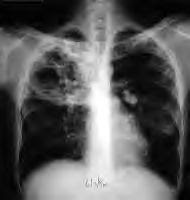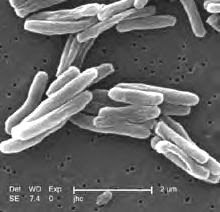In the majority of Central Asia's prisons and colonies, inmate access to even basic medical care is severely limited. Rights activists and former convicts say sick prisoners often get only one-half or even one-quarter of a pain-relief tablet, regardless of what illness they have. Prison facilities are considered the epidemiological pump behind the high rate of infectious diseases there.
The rates of HIV/AIDS and tuberculosis (TB) are high among inmates. The Brussels-based International Crisis Group reported last year that cases of TB among prisoners has more than doubled in Kazakhstan, tripled in Uzbekistan, and increased fivefold in Tajikistan since 1990.
In Kyrgyzstan, the rates of TB among prison inmates are said to be 40 times higher than in the general population and mortality rates are some 60 times higher, the ICG reported.
In response to this alarming situation, Kyrgyz authorities seem to be taking steps to address the problem. Observers have said that TB -- particularly its drug-resistant strains -- is rampant, two of the three prisons for men that have TB hospitals in Kyrgyzstan. (The women's and juveniles' colonies also house TB treatment centers.)
Kyrgyz authorities have demonstrated commitment and maturity in dealing with contagious diseases in the penal system. "Like all other prisons in this region, the situation [in Kyrgyz prisons] and the conditions of sick [convicts] are very bad, however, Kyrgyzstan does much more compared to other countries of the region in order to reduce the threat of the penitentiary system as a source of tuberculosis and HIV/AIDS."
Kyrgyzstan was the first country in Central Asia to receive the Global Fund's financial aid to start treatment of people with multidrug-resistant tuberculosis.
Central Asian countries are situated on a transit route of narcotics from Afghanistan to Russia and on to Europe. All of them, including Kyrgyzstan, have seen a sharp increase in the number of drug addicts -- particularly heroin users -- in recent years. The trend has led to the rise of HIV/AIDS among the general population, as well as in prisons.
"Yesterday, when we visited it, there were 52 people in a place suited for only 30 people. Their conditions were hard. There was neither fresh air, nor natural light [in the cells]. Food was provided for 30 people; the other 22 people did not receive any."
In general, convicts lack basic medical care as well. Specialized services, like oncological, gynecological, mental, and dental services are virtually unavailable in most prisons in the region. Nutritious food -- a key in treating TB -- is also in very short supply.
Furthermore, prisoners who receive treatment for TB in prisons and who require further therapy do not receive follow-up care. Thus, they are likely to spread TB among the general population after their release from prison.
http://www.rferl.org/featuresarticle/2007/09/5A8A687A_1826_42A9_82E6_3E8FC809F5FD.html
WHAT'S NEW IN TUBERCULOSIS
Tuesday, 11 September 2007
Subscribe to:
Post Comments (Atom)





No comments:
Post a Comment